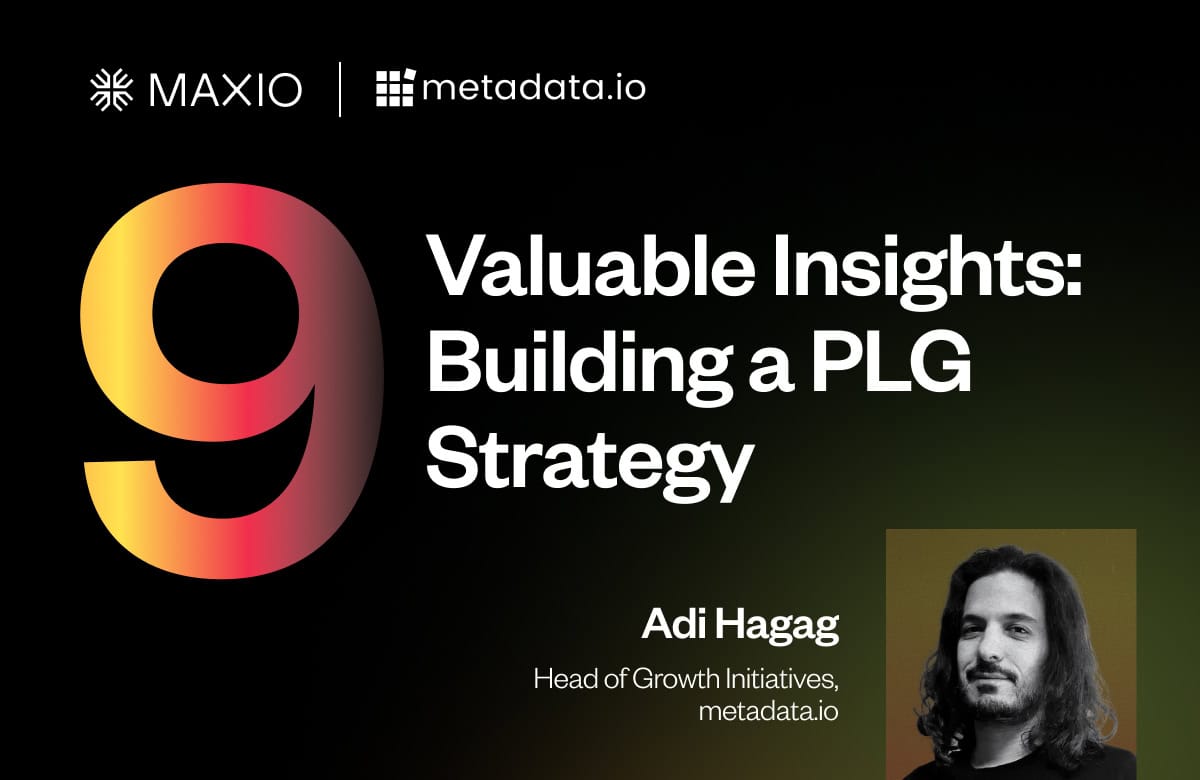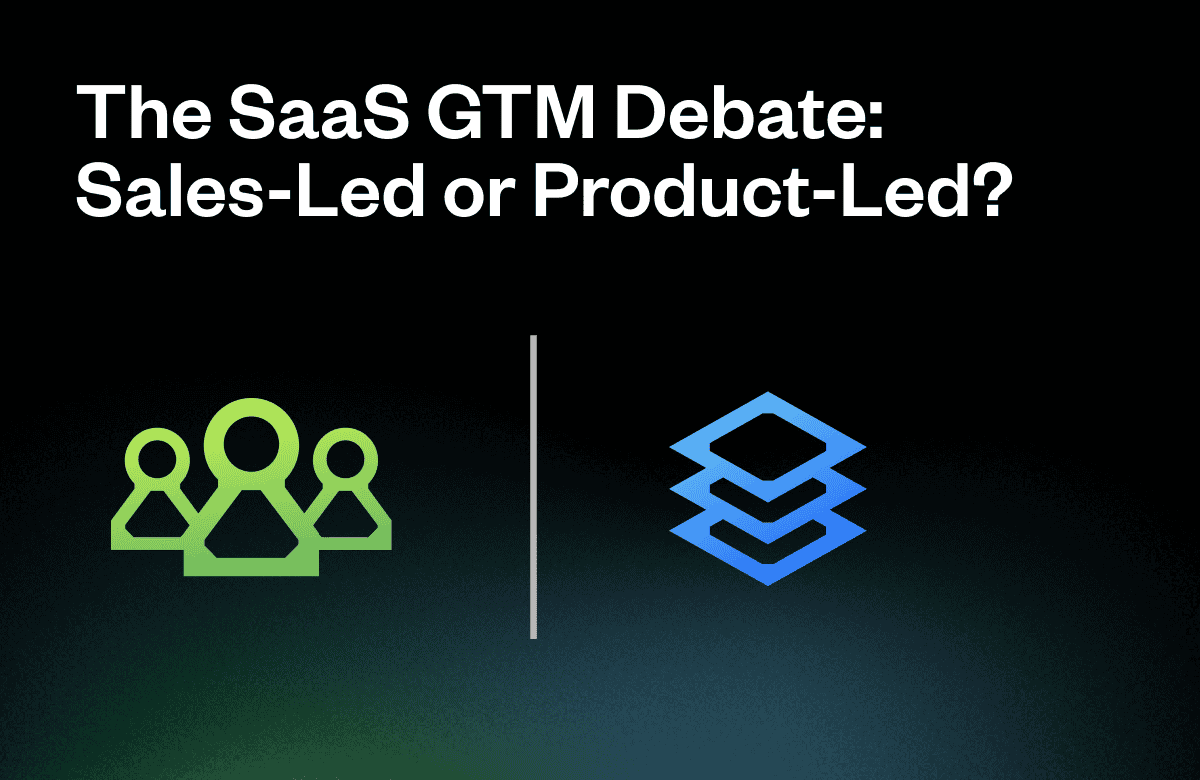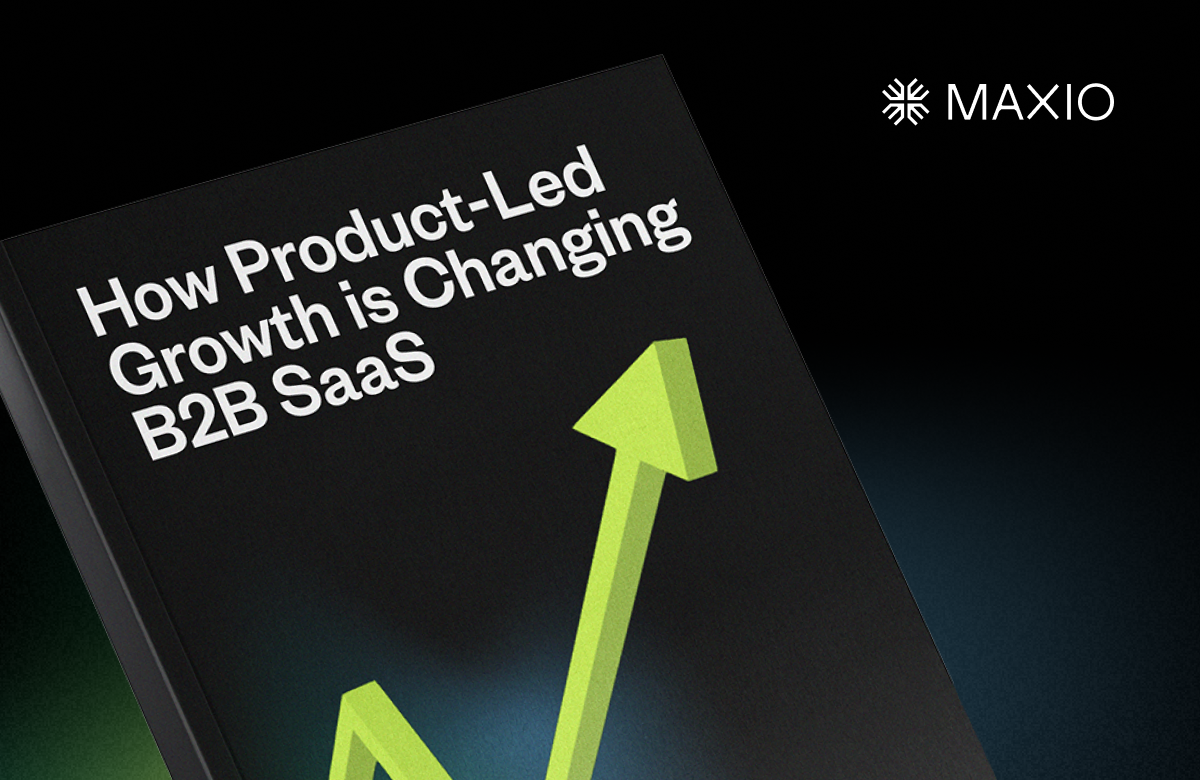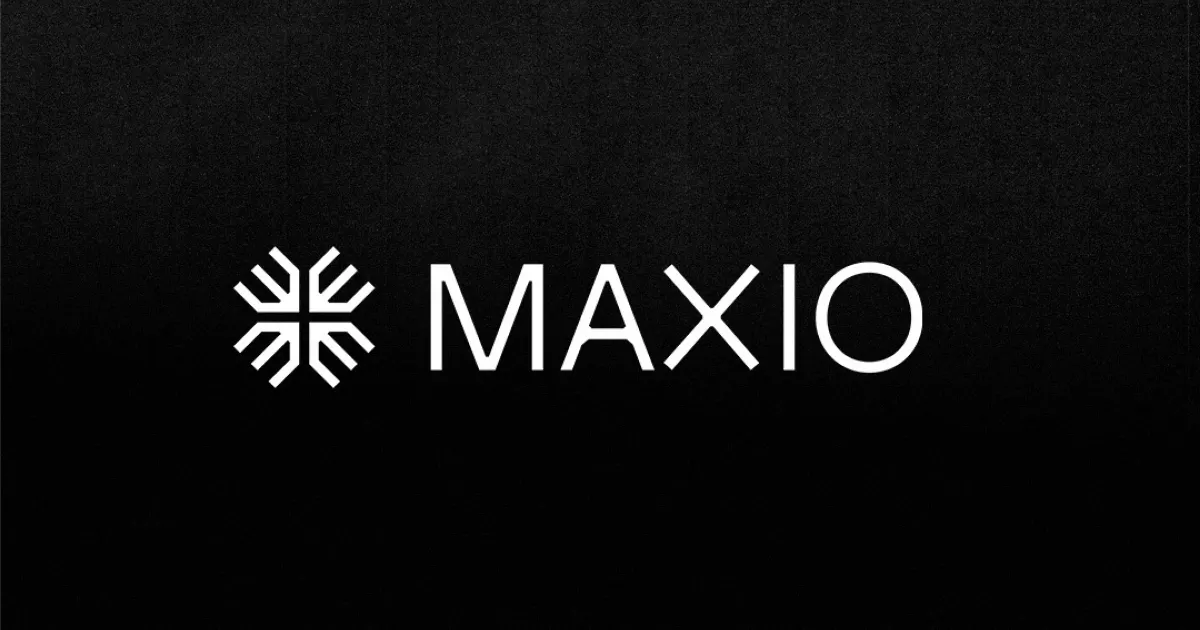I used to think building a product-led growth (PLG) motion was as simple as letting the product sell itself.
Spoiler alert: it’s not.
When we launched MetaMatch, I was convinced users would flock to our product on their own. What I didn’t anticipate were all the bumps along the way—mistakes that cost us time, resources, and missed opportunities. Looking back, there are 9 key lessons I wish I’d known from the start. Trust me, they would have saved us a lot of headaches.
1. The three P’s of onboarding (Product, People, Processes)
When it comes to onboarding, it’s tempting to think that the product itself should do all the work. After all, in a Product-Led Growth (PLG) motion, the product is meant to be the hero. But in reality, especially in the early stages, relying solely on the product is a mistake.
When we launched MetaMatch, the product wasn’t perfect on day one, and we had to get creative with how we onboarded users. Looking back, I realize we over-relied on trying to fix product gaps when a more robust support system—like personalized meetings, training sessions, or simple tutorial videos—would have been a quicker win.
If I had another chance to successfully implement a PLG motion, I’d prioritize people and processes to make onboarding smoother from the start.
To bridge the inevitable gaps in the product’s onboarding experience, you need to leverage other resources. This means investing in customer support, training sessions, demo videos, and detailed documentation. People and processes can fill in the blanks where your product might fall short early on.
For example, if the product isn’t intuitive yet, a well-timed email sequence or a quick Zoom call with a customer success manager can make all the difference in ensuring your users stay engaged and understand the value of your product.
2. Assume your users know nothing
Since we’re already on the topic of user onboarding, another crucial lesson is this: assume your users know absolutely nothing about your product.
In a PLG motion, where the barrier to entry is often as low as an email sign-up (or, if you’re feeling bold, a credit card for a free trial), it’s easy to forget that your users may not fully grasp why they signed up in the first place. They might have clicked through an ad out of curiosity, registered on a whim, or simply forgotten what your product does by the time they return to explore it.
At MetaMatch, we learned quickly that users were signing up, but many didn’t really know what our product did or how it could help them…
They’d forget why they registered or misunderstand our messaging. It became clear that assuming they knew nothing was the safest bet. Once we revamped our onboarding to guide them from square one, we saw engagement increase significantly.
That’s why you need to approach onboarding as if every user is starting with a blank slate. Even if your product feels intuitive or self-explanatory to you, don’t assume that will be the case for new users. They may misunderstand your value proposition or have misaligned expectations from the start.
For instance, when we built MetaMatch, I initially thought our product’s value was clear enough that users would immediately understand how to use it. But I quickly realized that wasn’t the case. Users often came into the product without clearly understanding what it did or how it could benefit them. That’s when we revamped our onboarding to guide users through the product as if they were completely new—no matter how simple we thought it was.
3. Self-service doesn’t mean you should ignore human connections
While product-led growth emphasizes the self-service model, one of the biggest misconceptions is that human interaction isn’t unnecessary. In reality, human connections are still crucial to building trust and fostering long-term customer relationships—even in a PLG motion.
Yes, the self-service nature of PLG is appealing because it allows users to explore and adopt your product at their own pace. But that doesn’t mean you should remove the human element entirely. Users want to know that there are real people behind the product who understand their needs and can help them when necessary. In fact, putting a face to your software can make a world of difference in terms of customer trust and commitment.
For instance, I’ve been a client of big companies like Stripe, and while the products were fine, I never felt connected to anyone at the company. At MetaMatch, we wanted to change that. We made sure that even though our onboarding was self-service, users could reach out and get real human support. Putting a face to our software made all the difference in building trust with our clients.
4. Approach PLG as a B2C play in a B2B context
One of the most eye-opening realizations when building a product-led growth motion is that B2B doesn’t have to mean complex.
In fact, a successful PLG strategy often borrows from the B2C playbook, where simplicity, mass appeal, and accessibility are key. Instead of looking to traditional B2B companies with complex, sales-heavy models, you’ll find more inspiration—and success—by learning from B2C giants like Nike, Uber, or even fast-food chains like Papa John’s.
These companies have perfected the art of appealing to the lowest common denominator (and I don’t mean that in a bad way).
They’ve figured out how to strip down their messaging and offerings to make their products universally understandable. Whether you’re buying a pair of sneakers, hailing a ride, or ordering a pizza, the experience is designed to be quick, easy, and intuitive for everyone.
In the same way, PLG in a B2B context should aim for simplicity.
Your goal is to appeal to the broadest possible audience, which means making your product and its messaging as straightforward as possible. At MetaMatch, we initially leaned into more complex, technical messaging—thinking that the more sophisticated we sounded, the more value we were conveying. But this approach backfired. Users don’t have time to decipher jargon or complex feature sets. What they really need is a clear, easy-to-understand message that tells them exactly what your product does and why it matters to them.
5. Market your clearest features, not complex solutions
When it comes to marketing your product in a product-led growth (PLG) motion, one of the biggest mistakes you can make is to try and wow your audience with jargon-filled, complex explanations of what your product can do.
The truth is, most users don’t care about all the bells and whistles—at least not at first. What they care about is whether your product can solve their immediate problem, and that’s where you need to focus.
In PLG, especially when you’re using B2C advertising channels like Facebook, Instagram, or Twitter to target B2B customers, you have seconds to capture attention. Overwhelming users with lofty, technical language or complex use cases will cause them to tune out. Instead, highlight your clearest, most immediately understandable features.
At MetaMatch, we initially marketed all the things our platform could do, from ABM strategies to complex targeting algorithms. But we found that most potential customers simply weren’t engaging with this messaging—it was too much, too fast. We realized that focusing on our clearest feature, the ability to target B2B buyers on B2C channels, was far more effective. It was simple, digestible, and most importantly, actionable.
6. Treat PLG like a gym membership: focus on unit economics
After simplifying your product’s messaging and features, the next step is to focus on the foundation of any successful PLG motion: unit economics.
You can think of PLG like running a gym. It’s not about having the fanciest machines or the most complicated membership plans. You need to know exactly how much it costs to get people through the door and how long it takes to recoup that cost. No magical thinking here—just simple math.
In the same way, your PLG strategy should focus on measurable, straightforward business metrics. Start by asking the basic questions: How much does it cost to get a user to sign up for a free trial? What’s the conversion rate from trial to paid user? And how long does it take for a paying customer to cover the initial cost of acquisition (CAC)? These metrics should be at the heart of your financial model.
At MetaMatch, we learned that over-complicating our financial model was a recipe for confusion.
PLG success is about volume—acquiring users efficiently and converting them into paying customers without any unnecessary complexity. In the early days, we made the mistake of getting lost in complex financial projections and overly detailed metrics, but we soon realized that the simplest metrics were the most telling. Keeping things simple helped us stay focused on what really matters: bringing in users, converting them, and recouping our costs.
In short, if your PLG finances are hard to explain, you’re doing it wrong.
Simplify your unit economics. Focus on tracking acquisition costs, conversion rates, and the timeline for recouping costs. Just like a gym needs to know how many memberships it sells and how long it takes to break even, you need to understand your product’s financial fundamentals. When you build your PLG motion around clear, simple unit economics, you’re setting yourself up for scalable, sustainable growth.
7. Invest in automation, but only if the ROI is clear
Once you have a solid grasp on your unit economics, the next question becomes: Where should you invest to grow?
One of the most tempting areas for any PLG company is automation. The idea of automating processes, streamlining operations, and letting software do the heavy lifting sounds like a no-brainer, but here’s the catch—automation is only worthwhile if it directly contributes to measurable business outcomes.
It’s easy to fall into the trap of “magical thinking” when it comes to investing in new features or automation tools. But the truth is, if it doesn’t improve a key metric like conversion rate, customer retention, or revenue growth, it’s probably not worth the investment. Every dollar spent on automation or new features needs to be justified by a clear return on investment (ROI).
At MetaMatch, we learned this the hard way.
Early on, we invested in several automation features that seemed impressive but didn’t move the needle in terms of trial-to-paid conversion or overall revenue growth. It wasn’t until we started asking a critical question—What specific improvement will this feature bring to our key metrics?—that we began to see real results. If the impact on conversions, customer engagement, or CAC wasn’t clear, we stopped the investment.
8. Start small: carve out a clear, simple feature for PLG
If you’re transitioning from a sales-led model to a product-led growth (PLG) strategy, one of the most effective ways to make the shift is to start small. The temptation might be to offer all of your product’s most complex, feature-rich capabilities, but in reality, the simpler, the better when launching a PLG motion.
Trying to roll out an entire product suite through a PLG motion can overwhelm users and complicate your efforts. Instead, carve out a single feature—something easy to use, high-impact, and understandable. This approach allows users to experience immediate value without feeling lost in a sea of options. The goal is to provide a quick win that hooks users and encourages them to explore further.
At MetaMatch, we initially thought our most advanced feature set would win over customers. But we quickly realized that our complex solutions were overwhelming for new users who needed something more straightforward. Instead of leading with our most powerful capabilities, we packaged a smaller, more accessible feature: the ability to target B2B buyers on B2C channels.
This single feature was simple, easy to explain, and valuable right out of the gate.
The beauty of this approach is that it allows users to ease into your product. Once they see value in that initial feature, they’ll be more inclined to explore other offerings. Starting with a small, self-contained feature also reduces the pressure on your development team to perfect every aspect of the product for a PLG launch.
9. Experiment early and often (but be ready to pivot)
Here’s the thing: when you’re building out a PLG motion, experimentation is non-negotiable.
You can have the best-laid plans, but until you start testing, you won’t really know what sticks. And that’s okay. Whether you’re an established company looking to dip your toes into PLG or a scrappy startup trying to figure out how to scale, experiments will be your best friend. But there’s a catch—you’ve got to be ready to pivot when the data tells you to.
For more established companies, running multiple small PLG experiments is how you’ll discover which features or approaches are actually making you money.
You might think Feature X is your moneymaker, but maybe users latch onto Feature Y. Try different onboarding flows, tweak your pricing models, or test a specific feature in isolation. It’s all about identifying the most financially rewarding opportunities and then doubling down on what works. Sure, not every experiment will be a home run, but that’s part of the process. You’re collecting data and learning what clicks with your audience.
Now, if you’re a startup, the game is a little different. You don’t have the luxury of endless runway or time to burn. Your job is to focus on quick wins—something that’s simple, easy to monetize, and valuable enough to get people hooked. Don’t get caught up trying to roll out your entire vision from the start. Instead, find the simplest feature you can sell right now. That initial win buys you more runway to build out the bigger vision later.
At MetaMatch, we had our fair share of failed experiments. We thought certain features would crush it in PLG, only to find out they weren’t moving the needle. But we didn’t cling to our assumptions. We pivoted. We learned. We took what worked and ran with it. That’s the beauty of PLG—you have the flexibility to adapt based on real-time feedback, not just gut feelings.
The big takeaway?
The lessons I’ve shared here will be just as relevant in 2025 as they are today—whether it’s simplifying your messaging, making human connections, or constantly experimenting and pivoting.
Building a PLG motion isn’t a straight line—it’s a series of experiments, lessons, and pivots. You’ll make some wrong turns, but if you focus on simplicity, data-driven decisions, and real customer value, you’ll find your path to growth.
These nine lessons? Consider them your shortcut to avoiding the mistakes I’ve made.
And if you really want to learn more about implementing a PLG motion, take a look at this guide from Maxio, How Product-Led Growth is Reshaping B2B SaaS.
About the author
Adi Hagag is the General Manager of MetaMatch at Metadata, where he combines his expertise in marketing technology and product-led growth (PLG) to help B2B companies advertise to their prospects on B2C channels. Prior to MetaMatch, he held key roles at companies like Optimove, Volumetree, Leadspace, and served as adjunct professor of digital marketing at Tel Aviv University.




